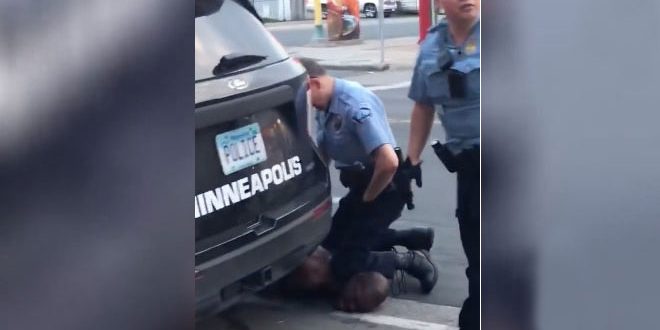Damascus, (ST) – “I can’t breathe” were the last words of help sought by the African American citizen George Floyd as he breathed his last breath under the foot of an American police officer in a crime that reflects the racist approach rooted in the United States in its most heinous forms and highlights the aspects of racial discrimination that the Police use when dealing with American citizens, especially of African origins .
Floyd’s murder that sparked protests bearing the slogan of his recent words “I can’t breathe” brings to mind the many and frequent racist murders committed by the US police, whether documented or undocumented, including the murder of the young Villando Castle in 2016 in Minnesota as well and the murder of Eric Garner similarly killed Floyd in New York in 2014.
Such crimes based on racism rooted in the mentality of some white Americans increased significantly after Trump’s arrival in the White House in early 2017 and his feeding of these racist and segregation practices on the basis of ethnicity through his inflammatory speeches to his electoral base, of which the far-right groups make up a large part.
On Monday evening, in Minneapolis, Minnesota, a forty-six-year-old black man named George Floyd died in a way that highlighted the implications that calls such as the one Amy Cooper placed can have; George Floyd is who Christian Cooper might have been. (The police made no arrests and filed no summons in Central Park. Amy Cooper has apologized for her actions; she was also fired from her job.) Police responding to a call from a shopkeeper, about someone trying to pass a potentially counterfeit bill, arrested Floyd. Surveillance video shows a compliant man being led away in handcuffs. But cellphone video later shows a white police officer kneeling on Floyd’s neck for seven minutes, despite protests from onlookers that his life is in jeopardy. In an echo of the police killing of Eric Garner, in 2014, Floyd repeatedly says, “I can’t breathe,” and then, “I’m about to die.” When the officer eventually removes his knee, Floyd’s body is limp and unresponsive. A person nearby can be heard saying, “They just killed him.” Floyd was taken to a hospital, where he was pronounced dead. A police statement said that Floyd appeared to be in “medical distress,” but made no mention of his being pinned to the ground with the weight of a police officer compressing his airway.
The video of Floyd’s death is horrific but not surprising; terrible but not unusual, depicting a kind of incident that is periodically reenacted in the United States. It’s both necessary and, at this point, pedestrian to observe that policing in this country is mediated by race.
On Tuesday, in Minneapolis, hundreds of protesters, many wearing face masks to guard against COVID-19, braved the pandemic to protest at the spot where Floyd died. Outside a nearby precinct house, police cars were pelted with rocks, and officers responded by firing tear gas. But, within twenty-four hours of the video coming to light, the Minneapolis Police Department fired the officer who had knelt on Floyd and three others who had been at the scene. Mayor Jacob Frey tweeted that the firings were “the right call,” but here, too, context matters.
https://www.newyorker.com/news/daily-comment/the-death-of-george-floyd-in-context
Raghda Sawas

